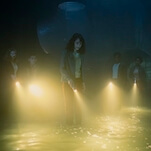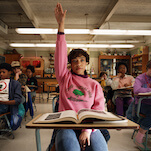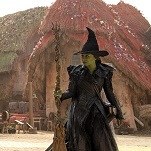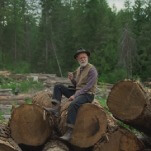If there's anything more universal than the adorability of a puppy, it's the cuteness of a precocious little girl. Combine the two with the heart-tugging allure of the archetypal girl-finds-puppy, girl-loses-puppy, girl-yearns-to-have-puppy back narrative, and you have a crowd-pleasing tale whose appeal transcends all cultural barriers. Though it touches on metaphysical concerns like reincarnation and social issues like urbanization, The Cave Of The Yellow Dog—Byambasuren Davaa's gorgeous, haunting follow-up to The Story Of The Weeping Camel—succeeds primarily because it understands the deep primal power of a girl and her pet.
Like Weeping Camel, Yellow Dog intentionally blurs the line between documentary and fictional filmmaking. The film effortlessly captures the languid rhythms of everyday life amid the rolling green hills for a real-life Mongolian nomadic family (the Batchuluuns) caught between the traditions of the past and the gradual encroachment of the modern world, which comes in the form of motorcycles and department stores. Not much happens in Yellow Dog: Animals act like animals, children behave like children, and adults go about the difficult business of providing for themselves and their families in a changing, challenging world.
Writer-director Davaa allows the drama to emerge organically out of the characters, the beautifully captured setting, and the conflict between the past and the present. Yellow Dog immerses itself in the mundane details of life among Mongolia's rural poor, but its sneaky cumulative power should be understandable to anyone who teared up at the ending of Old Yeller. In Mongolia or the American South, there's no surer bet emotionally than the travails of a pup, a cute child, and a cruel world intent on prematurely separating the two.








































